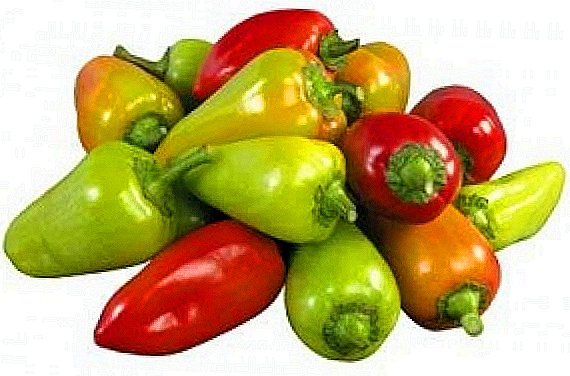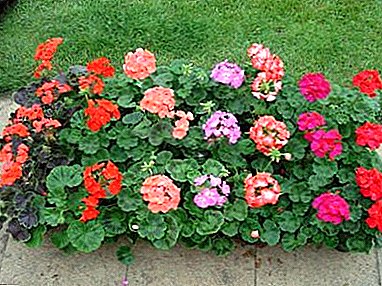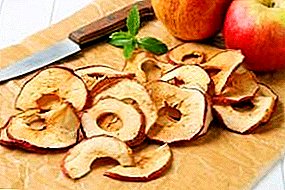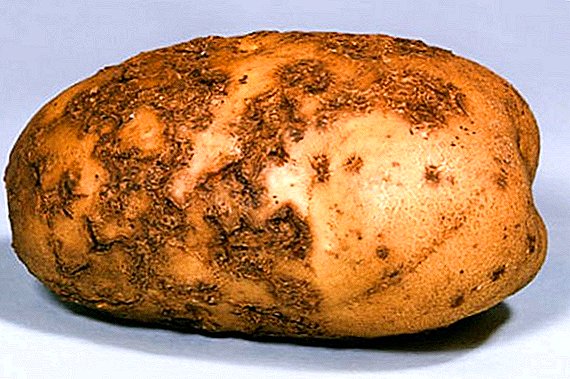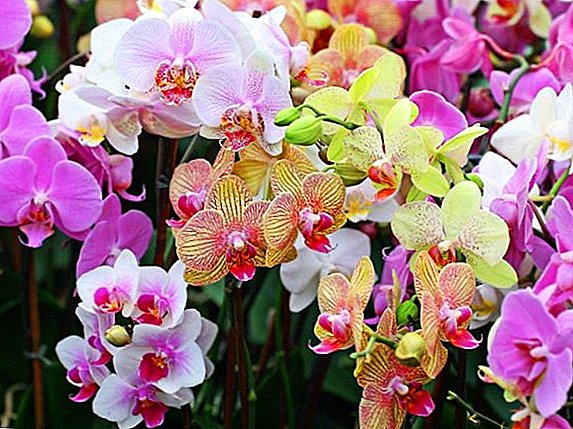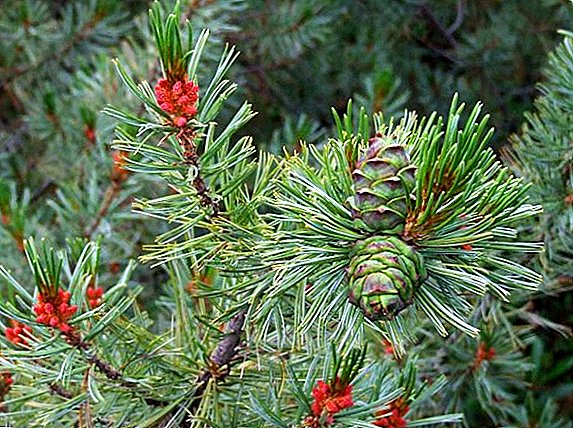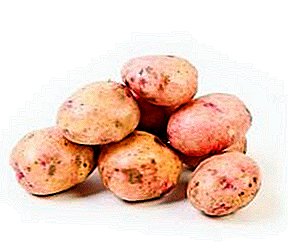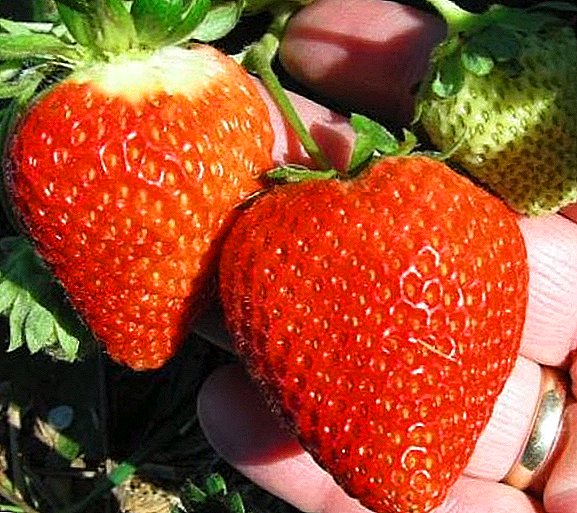 When the science of plant breeding began to reach its peak, popular types of fruits and vegetables began to increase annually at an exponential rate. Man requires - scientists are looking for new opportunities. The variety of strawberries "San Andreas" is designed to provide the public with a completely new type of berry, which is resistant to many diseases, good presentation and high fruit taste. In this article we will talk in detail about this variety, understand the rules for planting berries and caring for them.
When the science of plant breeding began to reach its peak, popular types of fruits and vegetables began to increase annually at an exponential rate. Man requires - scientists are looking for new opportunities. The variety of strawberries "San Andreas" is designed to provide the public with a completely new type of berry, which is resistant to many diseases, good presentation and high fruit taste. In this article we will talk in detail about this variety, understand the rules for planting berries and caring for them.
Variety description
Homemade strawberries "San Andreas" is a creation of American breeders from the state of California. The first mention of this type of strawberry appeared about 15 years ago.
Did you know? Strawberry is the only berry in the world, the seeds of which are outside, and not in the inner part of the pulp.
Since that time, the brand is gaining more and more popularity due to a number of its positive qualities:
- high degree of resistance to anthracnose and gray rot;
- sudden changes in temperature, atmospheric pressure or humidity do not cause significant damage to the bushes;
- berries have a beautiful trade dress, differ in the big sizes in comparison with other grades of strawberry;
- high yield and long-term fruiting (May-October);
- transportability at a high level;
- under all the necessary conditions, the shelf life is long enough when compared to other varieties of strawberries;
Video: description of the strawberry variety "San Andreas"
San Andreas has some drawbacks:
- bushes are demanding to care for them;
- remontant variety requires regular replacement of bushes (every 3-4 years), otherwise the intensive tying of berries will lead to the fact that they will eventually become smaller and smaller;
- The variety is susceptible to aphids and strawberry mites.
Check out the nuances of growing strawberry varieties such as Pandora, Merchant, Irma, Wife, Wima Zant, Shelf, Capri, Florence, Bereginya, Marmalade, "Garland", "Darlelekt", "Vicoda", "Zephyr", "Roxana", "Cardinal", "Tristan".
Experts note that one strawberry bush in a warm summer can produce up to 4 fruiting during the growing season. The bush has a medium size compared with other varieties of strawberries.
It is compact, spherical, with medium thickening. On each of the bushes on average up to 10 inflorescences are formed. Strawberry "San Andreas" can withstand temperatures down to -16 ° С. And in regions where winters are more severe, it is necessary to construct special shelters for it. 
Characteristics of berries and yield
Berries of strawberry "San Andreas" are distinguished by the following features:
- average fruit weight reaches 30 g. The maximum possible single specimens is 50 g;
- potential yield from one bush with optimal and proper care - 500-1000 g;
- fruits have a high density, the seeds are slightly pressed into the berries;
- the inner flesh of the berries has a light red color, the taste qualities are at a high level (the fruits are soft and juicy, there are notes of a slight sourness).
It is important to note that the fruits of this variety can be easily transported because of its high density. Some gardeners characterize the fruit as very hard. This feature allows large entrepreneurs to deliver their goods to different parts of a particular country or even a continent. 
Agrotechnics of growing and caring for strawberries
Strawberries "San Andreas" will be pleased with its fruiting only with proper and balanced care. Many experts note that this is one of those varieties that, without proper care, do not bring the proper amount and quality of berries. Moreover, the decorative component of the bush is also lost.
We advise you to get acquainted with the best varieties of strawberry repairman.
Selection of seedlings
The best place to buy seedlings is proven and certified nurseries. They will provide you with a certificate of quality, as well as a guarantee on your product. Buying seedlings on the market, there is always a risk to buy the wrong kind or wild strawberry species in general.
Important! Strawberry seedlings should be planted in open ground only if the risk of returning night frost has already been reduced to zero.

For those who have not previously dealt with the purchase of strawberries "San Andreas", we propose a few rules for choosing seedlings:
- When buying seedlings in the spring (end of April - May), pay attention to the number of young leaves. They should be at least 2-3, not counting the old ones;
- Leaves should have a natural green color, natural shine and hair. Pale fading leaves are most likely affected by late blight necrosis of the horns. This disease is not treatable, so seedlings die soon;
- dark dots on the leaves indicate the presence of a fungal infection, withering shoots and leaves indicate the defeat of strawberry mite;
- the horns should be thick enough, since the amount of the crop will depend on it. Experts note that it is best to buy seedlings, the thickness of which is 7 mm or more;
- Be sure to check the root system of seedlings. The roots must be branched and have a natural color and a normal smell. If there is a smell of rot, then it is better not to buy such seedlings.
These five rules are the reference when choosing young strawberry bushes. However, if you are new to strawberry farming, then it’s best to take with you to the market or nursery of your more experienced friend.
Conditions of detention
To grow strawberries "San Andreas" is best in places where radishes, marigolds, beans, carrots, mustard, parsley, and garlic were previously grown. But after cucumbers, solanaceous cabbage and cabbage, it is better not to plant this variety of berries.
Choosing a place to land should also be taken with all care. The variety prefers sunny spots on the south or southwest side of the plot. In addition, the landing area should be flat, without holes and depressions, in which moisture can stagnate.
Moisture stagnation, especially in early spring, can cause fungal diseases in strawberries. Separately, I would like to clarify the moments with sunlight. Decrease in fruiting can occur both in case of insufficient illumination, and in case of its oversupply.  In the first case, unfortunately, nothing will be done, since you cannot change the climate region and its features. However, it often happens that hot sunny days begin in July-August, especially in the southern regions. Then strawberries begin to bear fruit less actively.
In the first case, unfortunately, nothing will be done, since you cannot change the climate region and its features. However, it often happens that hot sunny days begin in July-August, especially in the southern regions. Then strawberries begin to bear fruit less actively.
In such cases, gardeners recommend covering the landing with a special network that creates penumbra. The analog variant is planting tall grassy plants around a strawberry (maize, sunflower).
Soil and fertilizer
The variety prefers a slightly acidic or neutral acidity soil. For planting, black soil is best suited, in which it is necessary to add a little peat.
It will be useful for you to read about what types of soil are, how to improve soil fertility, how to independently determine the acidity of the soil at the site, and also how to deoxidize the soil.
If there is no possibility of landing in black soil, then strawberry bushes should be fed regularly, especially if they are planted in dense sandy soil. 
Important! For young seedlings, all the following dosages for fertilizer application should be reduced by 2 times.
From the regularity and quality of dressings will depend on the yield of the crop bushes. Strawberry "San Andreas" needs both mineral and organic fertilizers.
For a grade, generally accepted rules of fertilizing are developed:
- The first feeding is made in May. During this period, shrubs need nitrogen supplements, which are growth promoters. It is recommended to apply 20 g of nitrogenous fertilizers per 1 m². In addition, it is necessary to introduce organic matter: cow and bird manure (diluted in water and produce watering).
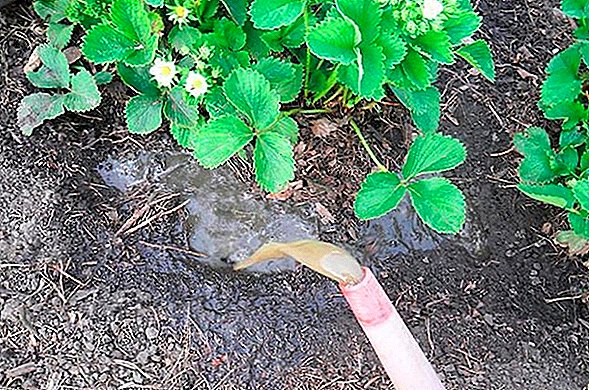
- The second time feeding is carried out in the middle of the growing season. Often, this period falls on the period of active flowering of strawberries. At this time, complex mineral fertilizers are introduced, which consist of nitrogen, potassium and phosphorus. The complex of these minerals to make in the amount of 10-20 g per 1 m².
- The third dressing is carried out at the end of the growing season, when the berry bushes are preparing for wintering. Often this period falls in October - early November. At this time, strawberries no longer need nitrogen, but it is badly needed phosphorus, along with potassium. You can use drugs superphosphate and potassium chloride in dosages of 15-20 g per 1 m².
If the strawberries are not planted in the black earth region, then organic fertilizers should also be regularly introduced. For these purposes, the best suited rotten manure or humus (to make the spring and autumn). For 5 m² 15-20 kg of organic matter is applied.
Video: how to fertilize strawberries
Watering and moisture
Watering should be adjusted in the form of drip irrigation. This way of moisturizing will help to balance the optimal flow of water into the root system of strawberry bushes. After all, too much water will lead to fungal diseases, and regular drying of the soil will significantly reduce the yield of the variety.
Watering is best done in the early morning or late evening, as during the daytime they can lead to increased evaporation, burns and the greenhouse effect. Water for irrigation should be warm, about room temperature.
We recommend reading about how often to water the strawberries, how to properly and when to cut the leaves and mustache of strawberries, how to process strawberries in the fall, how to properly care for the strawberries during flowering, what siderats need to be planted under strawberries to increase yield.
Relation to temperature
This strawberry variety was bred in California, where in summer the air temperature is warm enough. "San Andreas" is adapted specifically to the California climate, so in our country the best grade will be in the southern regions.  Despite the love of a warm climate, San Andreas can withstand temperatures down to -16 ° C without any problems.
Despite the love of a warm climate, San Andreas can withstand temperatures down to -16 ° C without any problems.
Reproduction and planting
Strawberry seedlings are best planted in late April or early - mid-May. It all depends on the climatic features of the region. During planting, the distance between the rows of 40 cm should be observed, and between the bushes - 30 cm. This scheme will help the bushes to form the above-ground part normally and bear fruit very efficiently.
It should also be remembered that when planting the core should be located at the level of the surface layer of the soil. Immediately after planting, it is recommended to soil the soil with peat, sawdust or straw. Mulch will trap moisture in the soil, which is especially necessary during dry periods of summer.
The breed propagates in two ways:
- whiskers. For breeding in this way, you must first select the strongest strawberry bushes. Take a few mustache and prikopat them on the sides of the beds. When they are strong and mature, they can be separated from the mother plant and transplanted;
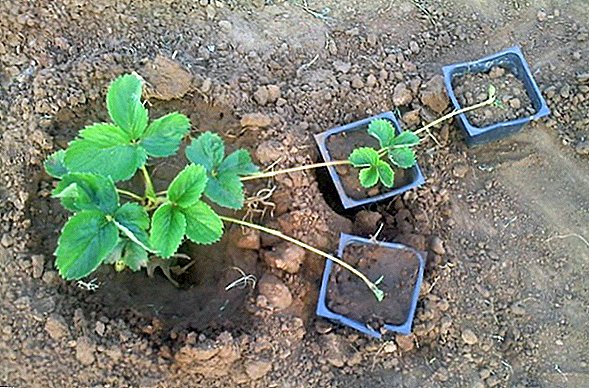
Did you know? Strawberries can reduce the power of headaches, as it contains a substance that is almost identical with aspirin.
- division of the bush. Choose the strongest bushes, whose age is at least two years. The bush is divided into two equal parts and spreads out. Such procedures are best performed in spring or late autumn.

Learn how to plant strawberries in spring and autumn.
Growing difficulties and recommendations
When growing "San Andreas" may experience various difficulties, most of which are associated with diseases and pests. But the above problems often appear due to improper planting care.
That is why it is important to observe the following recommendations when growing strawberries:
- 1-2 times a month to do weeding;
- water and mulch regularly around the bushes;
- fertilizers should be applied strictly according to the rules that we have described in detail a little higher;
- in case of unbearably hot weather (daytime air temperature is above +34 ° C), planting strawberries should be tinted with a special net;
- in regions where winters are snowless and frosty, strawberry plantations need to be warmed for the winter.

Pests, diseases and prevention
For the prevention of fungal diseases, as well as for the prevention of pest invasion, the following mixture should be prepared:
- 10 liters of water;
- 2 tbsp. l 9% acetic acid;
- 2 tbsp. l chopped wood ash;
- 2 glasses of liquid soap;
- 3 tbsp. l sunflower oil (which was amenable to long-term heat treatment).
All the above ingredients are mixed, and the resulting solution is treated bushes and the soil under them. If preventive measures are ineffective, and the disease still hit the strawberries, you will have to use traditional chemicals.
You will probably be interested to read about how to deal with diseases and pests of strawberries.
Most often, "San Andreas" affect such diseases and pests:
- powdery mildew. It is necessary to fight with the help of colloidal sulfur or potassium permanganate;
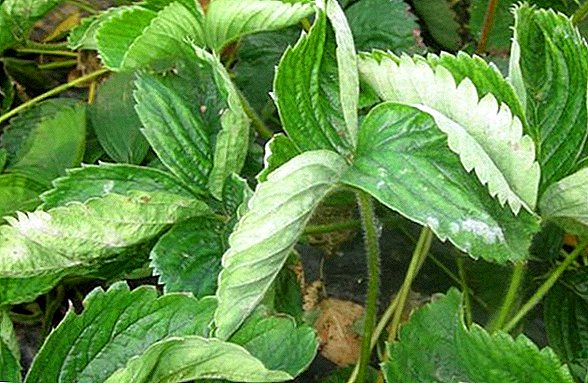
- aphid. Destroyed with an aqueous solution of wood ash and laundry soap;
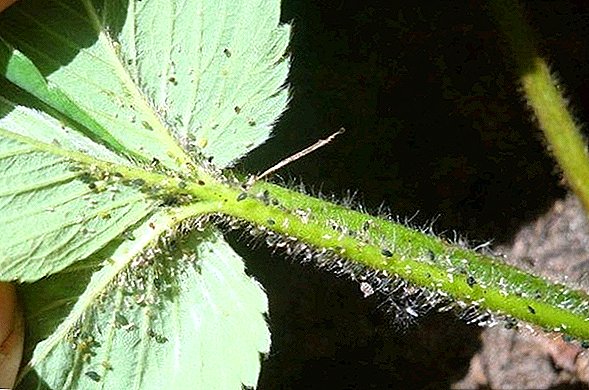
- strawberry mite. It is eliminated by spraying the bushes with karbofos solution;

- brown spot. In this case, treat strawberries with copper oxide.
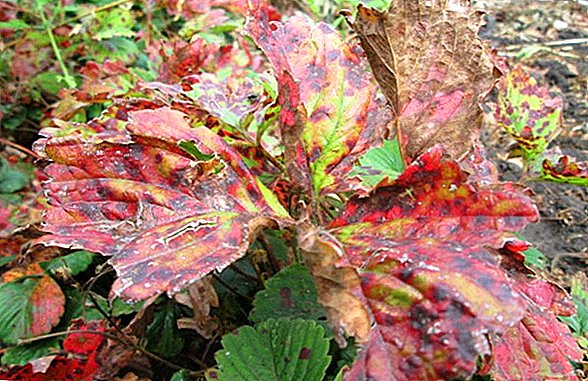
Important! From strawberry bushes need to regularly remove all dry and damaged pests shoots.
In conclusion, it should be noted that the variety of strawberries "San Andreas" is whimsical in care. However, with enough free time and the availability of knowledge about the rules of watering, fertilizing, weed, etc., the yield of the bushes will be high.
Reviews from the network











